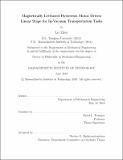| dc.contributor.advisor | David L. Trumper. | en_US |
| dc.contributor.author | Zhou, Lei,Ph.D.Massachusetts Institute of Technology. | en_US |
| dc.contributor.other | Massachusetts Institute of Technology. Department of Mechanical Engineering. | en_US |
| dc.date.accessioned | 2019-09-16T21:16:31Z | |
| dc.date.available | 2019-09-16T21:16:31Z | |
| dc.date.copyright | 2019 | en_US |
| dc.date.issued | 2019 | en_US |
| dc.identifier.uri | https://dspace.mit.edu/handle/1721.1/122142 | en_US |
| dc.description | This electronic version was submitted by the student author. The certified thesis is available in the Institute Archives and Special Collections. | en_US |
| dc.description | Thesis: Ph. D., Massachusetts Institute of Technology, Department of Mechanical Engineering, 2019 | en_US |
| dc.description | Cataloged from PDF version of thesis. | en_US |
| dc.description | Includes bibliographical references (pages 241-246). | en_US |
| dc.description.abstract | This thesis presents a new in-vacuum reticle transportation mechanism for extreme ultraviolet (EUV) photolithography machines. In the photolithography process, the reticle is a quartz plate that contains a pattern of the integrated circuit, which needs to be transported between a storage position and the exposure stage. In next-generation EUV lithography machines, the reticle handling system must satisfy the following requirements: (1) transport the reticle through a distance of 2 meters, (2) the height of the mechanism needs to be within 100 mm, (3) operate in vacuum, and (4) satisfy ultra-tight contamination requirements. To fulfill these requirements, a conventional robotic reticle handler is inadequate. In this work, we designed, built, and tested a magnetically-levitated linear stage prototype, targeting at the reticle transportation application. Compared with robot manipulators, linear stages typically require less volume for long-distance transportation tasks. | en_US |
| dc.description.abstract | Magnetic suspension is used to eliminate mechanical contact and thereby avoid particle generation that can contaminate the reticle. The stage's linear motion is driven by linear hysteresis motors, which allows using solid-steel motor secondaries on the moving stage. This is desirable for in-vacuum operation, since permanent magnets can out-gas in high vacuum when not encapsulated. The magnetic suspension of the stage is achieved using a novel linear bearingless slice motor design, where the stage's magnetic suspension in three degrees of freedom, including vertical, pitch, and roll, are achieved passively. This compact design effectively reduces the number of sensors and actuators being used. The prototype system has successfully levitated the moving stage. The resonance frequency of the passively levitated degrees of freedom is approximately 10 Hz, and the suspension bandwidth of the actively-controlled degrees of freedom is about 60 Hz. | en_US |
| dc.description.abstract | The stage's maximum thrust force is 5.8 N under a 2.5 A current amplitude, which corresponds to a stage acceleration of 1200 M/s². This is able to satisfy the acceleration requirement for reticle transportation task. The stage was tested to track a reticle handling reference trajectory, where the maximum position tracking error of our linear stage is 50 [mu]m. The stage's lateral displacements during motion is below 50 [mu]m, which is well below making mechanical contact to the side walls. To our knowledge, this work represents the first study of linear hysteresis motors, and the first linear bearingless slice motor design. Hysteresis motors are a type of electric machine that operates using the magnetic hysteresis effect of the secondary material. Since the magnetization in the rotor lags behind the external field, a thrust force/torque can be generated. | en_US |
| dc.description.abstract | In prior usage, hysteresis motors have been operated in open-loop, which makes them unsuitable for applications where dynamic performance is critical. As a part of this thesis work, we also studied the modeling and closed-loop torque and position control for hysteresis motors. The proposed control method was tested with three rotary hysteresis motors, including two custom-made motors of different rotor materials and one off-the-shelf hysteresis motor. Experimental results show that position control for all three motors can reach a bandwidth of 130 Hz. To our best knowledge, this is the first work that enabled high-bandwidth torque and position control for hysteresis motors, which allows this motor to be used for servo applications. | en_US |
| dc.description.sponsorship | Sponsored by ASML | en_US |
| dc.description.statementofresponsibility | by Lei Zhou. | en_US |
| dc.format.extent | 246 pages | en_US |
| dc.language.iso | eng | en_US |
| dc.publisher | Massachusetts Institute of Technology | en_US |
| dc.rights | MIT theses are protected by copyright. They may be viewed, downloaded, or printed from this source but further reproduction or distribution in any format is prohibited without written permission. | en_US |
| dc.rights.uri | http://dspace.mit.edu/handle/1721.1/7582 | en_US |
| dc.subject | Mechanical Engineering. | en_US |
| dc.title | Magnetically levitated hysteresis motor driven linear stage for in-vacuum transportation tasks | en_US |
| dc.type | Thesis | en_US |
| dc.description.degree | Ph. D. | en_US |
| dc.contributor.department | Massachusetts Institute of Technology. Department of Mechanical Engineering | en_US |
| dc.identifier.oclc | 1117714045 | en_US |
| dc.description.collection | Ph.D. Massachusetts Institute of Technology, Department of Mechanical Engineering | en_US |
| dspace.imported | 2019-11-15T18:42:57Z | en_US |
